1lumen selects and reviews products personally. We may earn affiliate commissions through our links, which help support our testing.
Amutorch E4 review
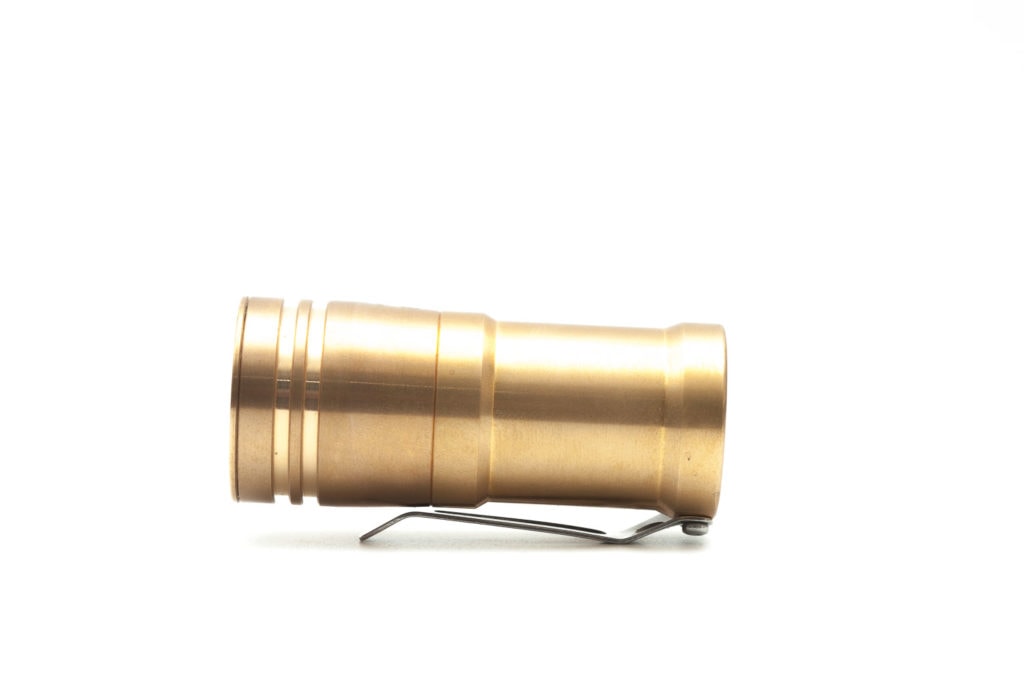
Amutorch E4 specifications
| Brand/model | Amutorch E4 |
|---|---|
| Category | Copper flashlight |
| LED | 4*Luminus 6500 SST20 |
| Lumens | 4,000 lm |
| Beam intensity | / 242 meters |
| Battery config. | 1*20350 |
| Material | Brass |
| Modes | 1-4 (you can choose), default 2 |
| Blinkies | Strobe (hidden) |
| Reflector | TIR |
| Waterproof | IPX8 |
| Review date | June 2021 |
Introduction:
So far, we’ve only reviewed a couple of Amutorch flashlights, but that doesn’t mean Amutorch isn’t expanding its lineup. We just received 3 flashlights for review, the E3Q, E3H and the E4. All three use a similar UI, so that makes it easier to test and compare.
This review is about the Amutorch E4, a heavy brass EDC flashlight with 4,000 lumens. At least, that is what the specifications are telling us, and the only way to see if that is true, is by testing.
Package quality.
Starting with the packaging, all three Amutorch flashlights I revied were sent in a simple carton box. Inside the box you can find the following:
- The Amutorch E4
- 1 spare o-ring
- ‘certificate of quality’
- 20350 battery (optional)
- Charger (optional)
That’s not a whole lot, but sufficient to get started. One thing I did miss is a normal, English manual. But even without it, the UI is quite easy to decipher. More on that in the UI section.
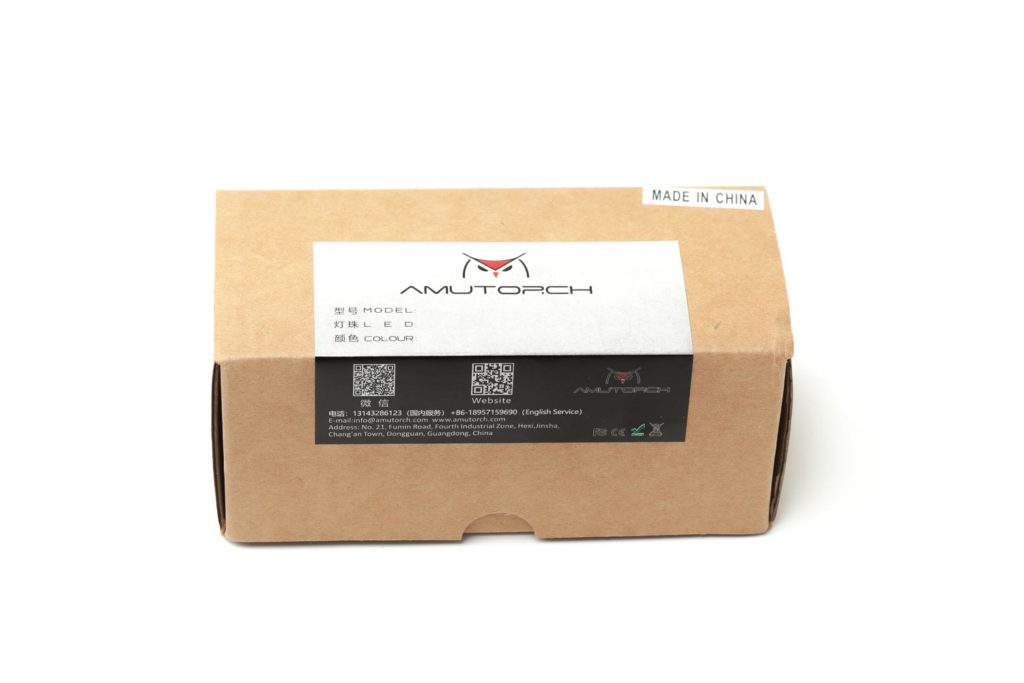
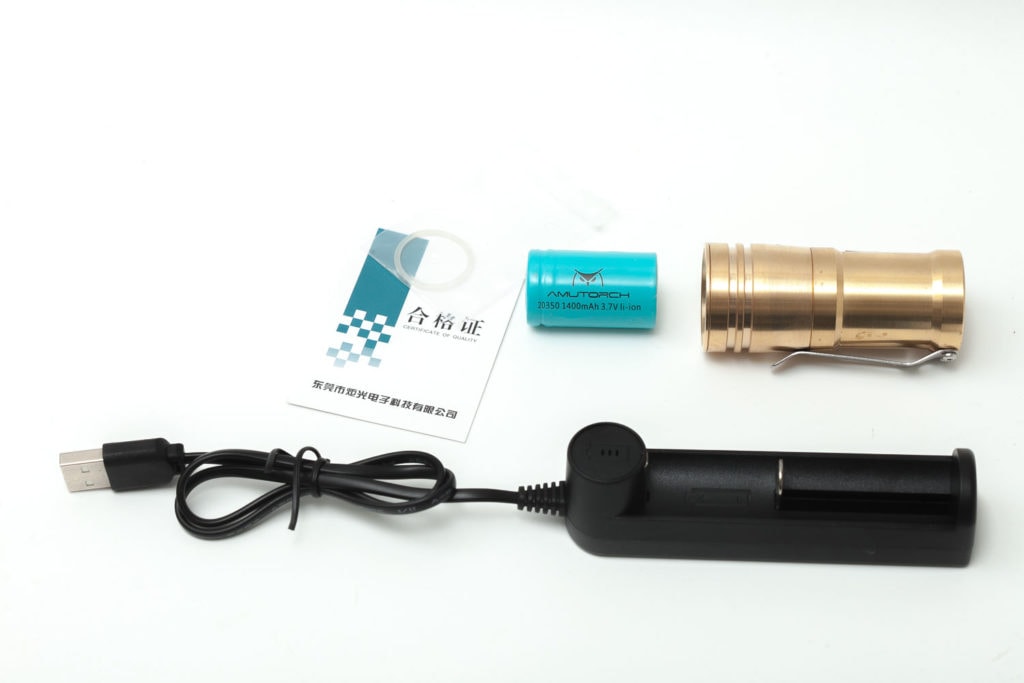
Flashlight in use
The Amutorch E4 is using a reverse-clicky switch. This means that you have to fully press (and hear the click) to turn the light on. And because of this, there is no momentary mode.
The light itself is small and heavy, compared to similar-sized lights. There’s no knurling on the body, nor on the head. There is also no lanyard attachment, so you can only use the pocket clip. But that’s not completely true, because you can still use a lanyard attached to the pocket clip. For some flashlights, that’s the only way to attach the lanyard. There is a nice little hole in the clip near the top, which is a perfect spot to attach the lanyard to.
Even though it has no knurling, during reviewing, I had zero problems holding the flashlight. It doesn’t feel slippery or anything. But that could be because of the current temperature. It’s currently 29 degrees Celsius / 84 degrees Fahrenheit in my room, so that could definitely be the reason why it’s not slippery.
The bottom of the E4 (tail-side) is flat, which makes it a very stable flashlight to tail-stand. Just add a diffusor and you have a nice nightstand lamp.
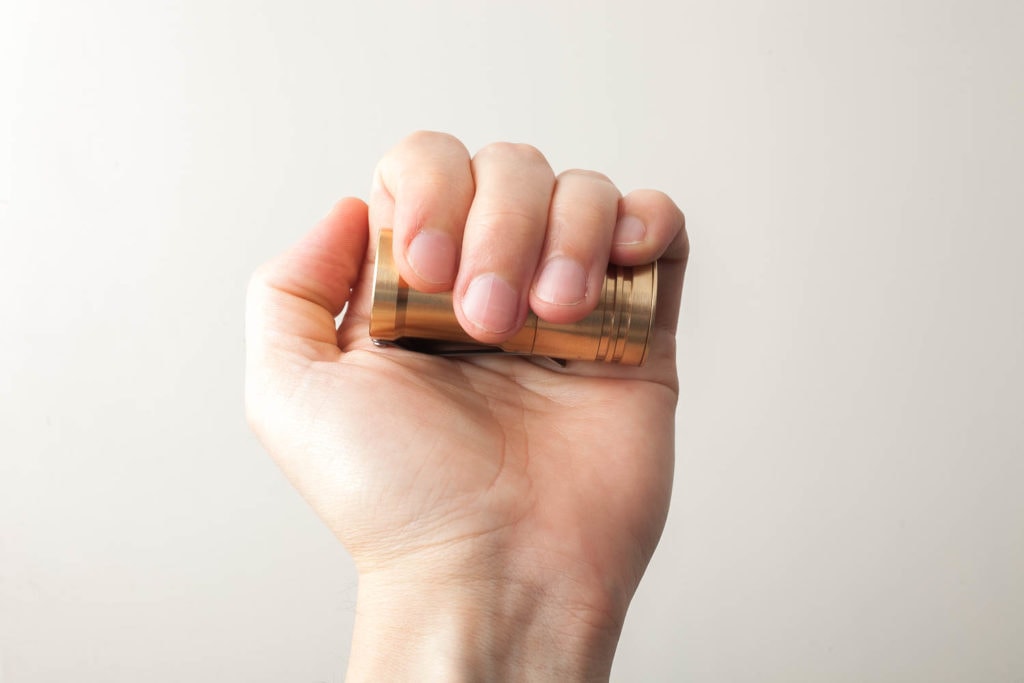
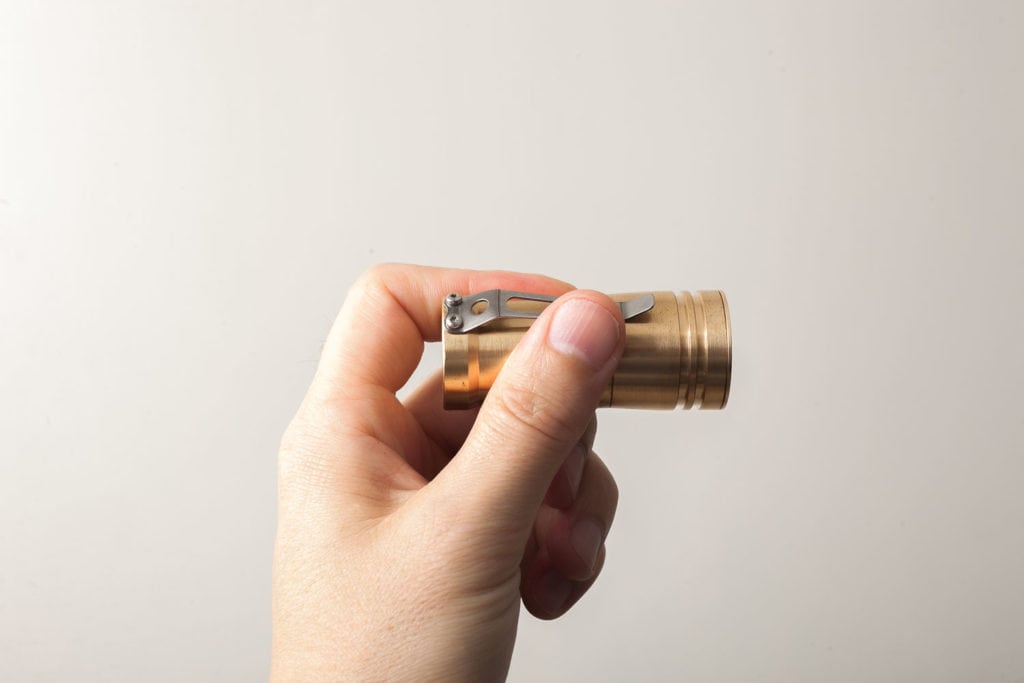
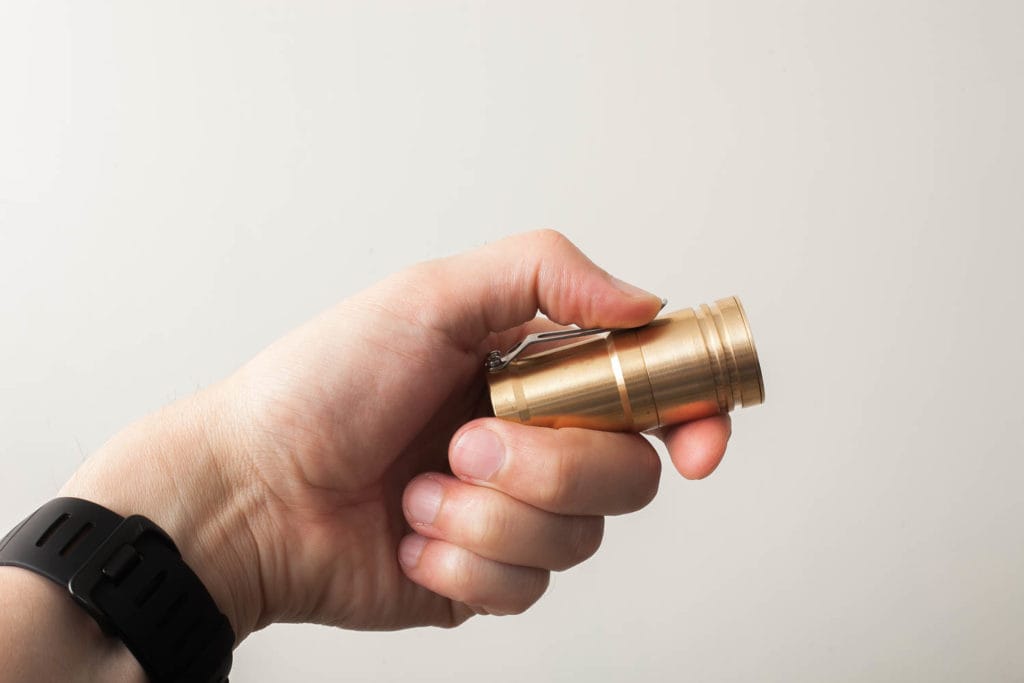
Build Quality, and Warranty
The E4 consists of 2 parts. The body (with tail-switch) and the had. Both are heavy and made of brass. Brass isn’t the best material for dissipating heat, but it doesn’t develop a green patina like copper. If you’re looking for a high-power flashlight, you better not choose a brass one. And since it’s made of brass, theres’ no anodization.
Unscrewing works very smooth, and no complaints there either. The threads are nice thick, so you won’t easily cross-thread them, which is a huge plus.
The lack of knurling may be something you may not like, but you’ll notice very tiny rings around the body if you look very closely. This might be the machining done on the flashlight, and not ‘on purpose’ or by design. When you move your nail up and down the flashlight, you can hear it, but it’s hard to see.
Clipping the light to your belt shouldn’t be a problem because the pocket clip has a nice bent toward the end, so you don’t need nails to ‘open’ the clip. It does bend a bit when you use a little force. But that’s with most clips anyway.
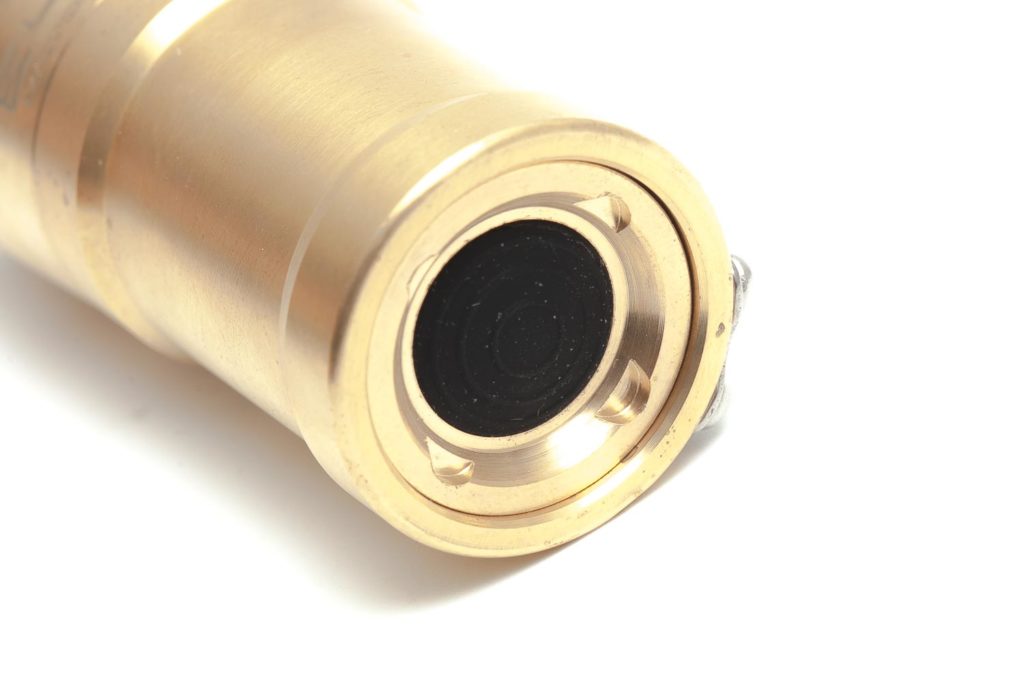
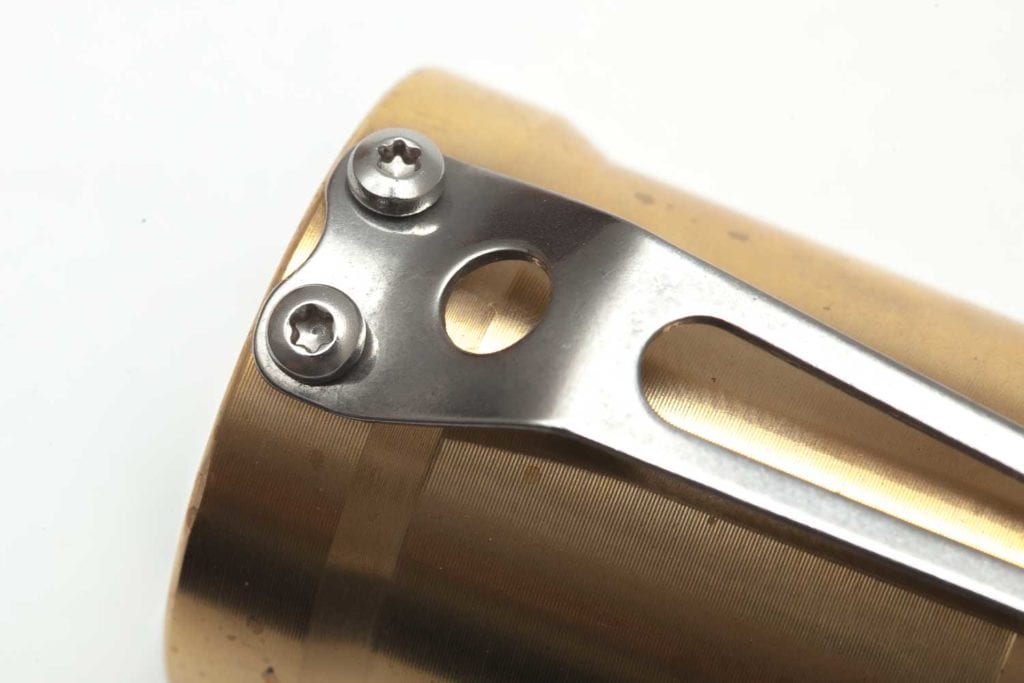
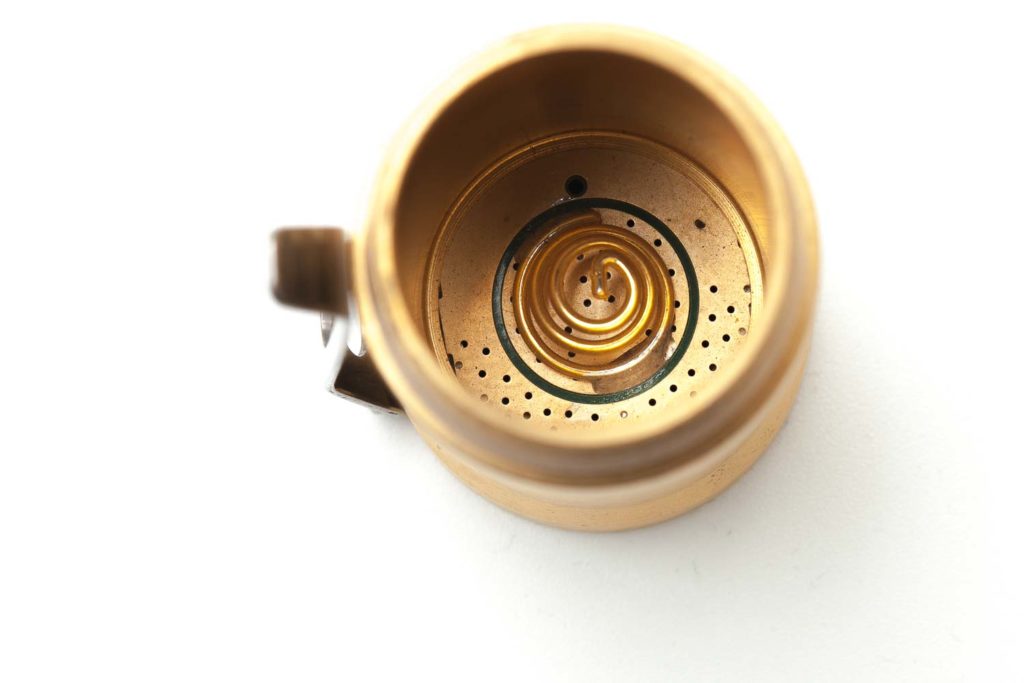
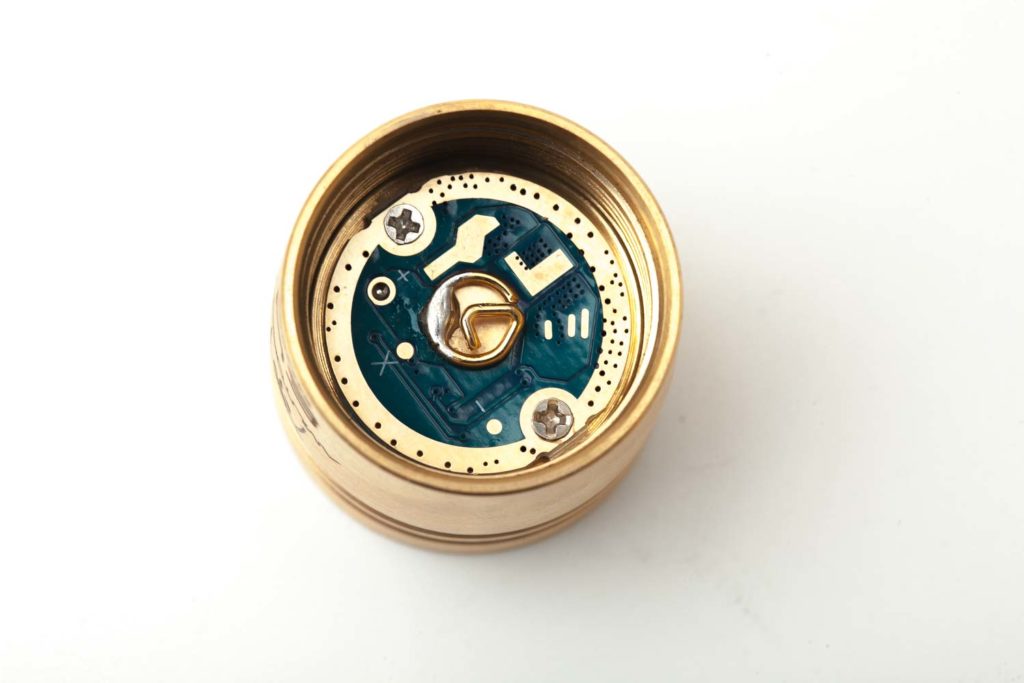
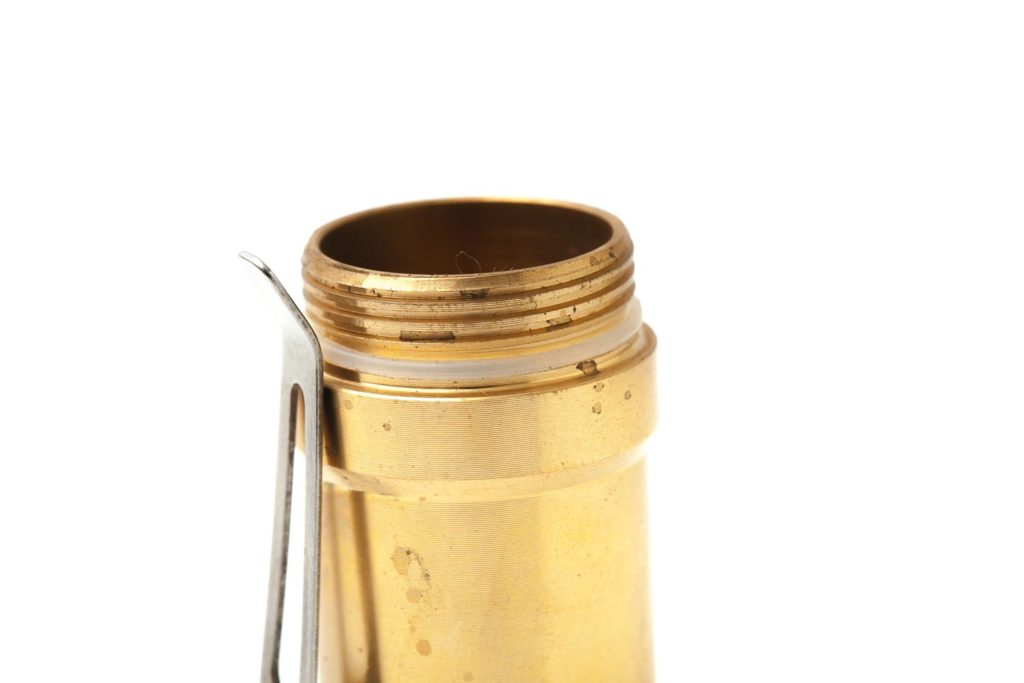

LED, Lens, Bezel, and Reflector
At the business end of the flashlight you will find 4 LEDs behind a Carclo TIR optic. Amutorch gives you the choice between Nichia 5000K LEDs and the Luminus SST20 6500K LEDs. So depending on the color temperature you want, you’ll get either Nichia or Luminus LEDs.
My copy has the Luminus SST20 6500K version and is supposed to be brighter than the Nichia version. So all the measurements in this article are of course based upon my copy, and not the other LED brand.
The Carclo quad optics were very well, and make a nice smooth beam with a large hotspot and a nice smooth transition into the spill, and then into the darkness. If you want to take a look on the inside you better use some tools, because it’s really difficult to take off by hand. At least I couldn’t do it.
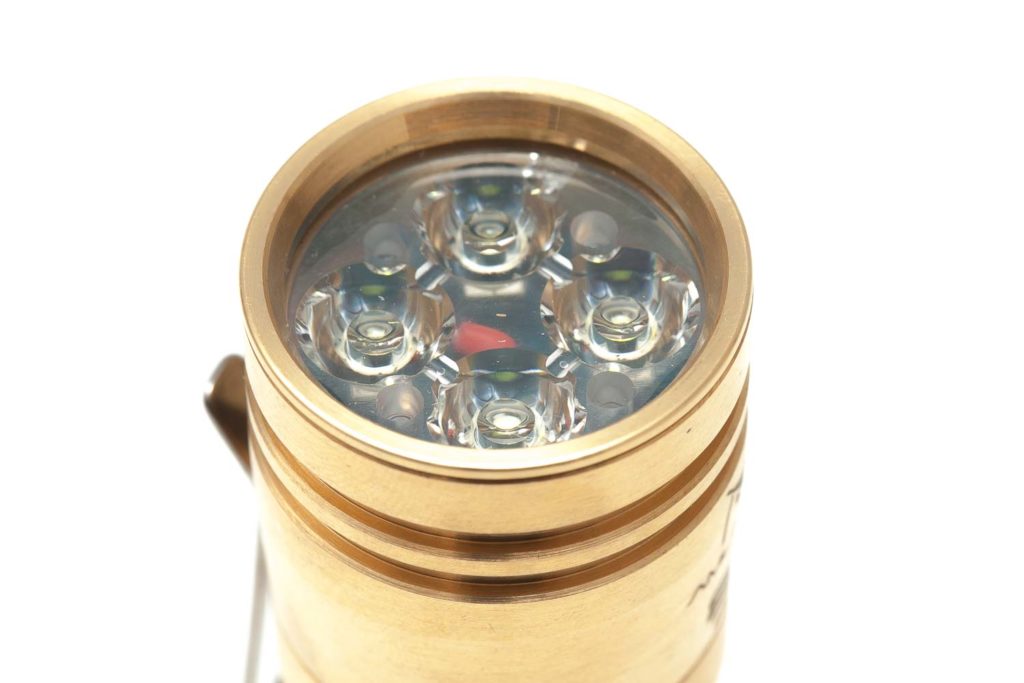

Dimensions and size comparison
- Length: 68.5 mm / 2.7”
- Head diameter: 29.5 mm / 1.16”
- Body diameter: 25.9 mm / 1”
- Tailcap diameter: 27.9 mm / 1.1″
Weight:
- Empty: 143.1 g / 5.05oz
- With battery: 171.1 g / 6.04oz
EDC Flashlights size comparison
Size compared to other EDC flashlights.
Image 1+2; from left to right: Amutorch E3Q, Amutorch E4, 21700 Amutorch battery, Lumintop EDC AA, Baivic V4+, Amutorch E3H.
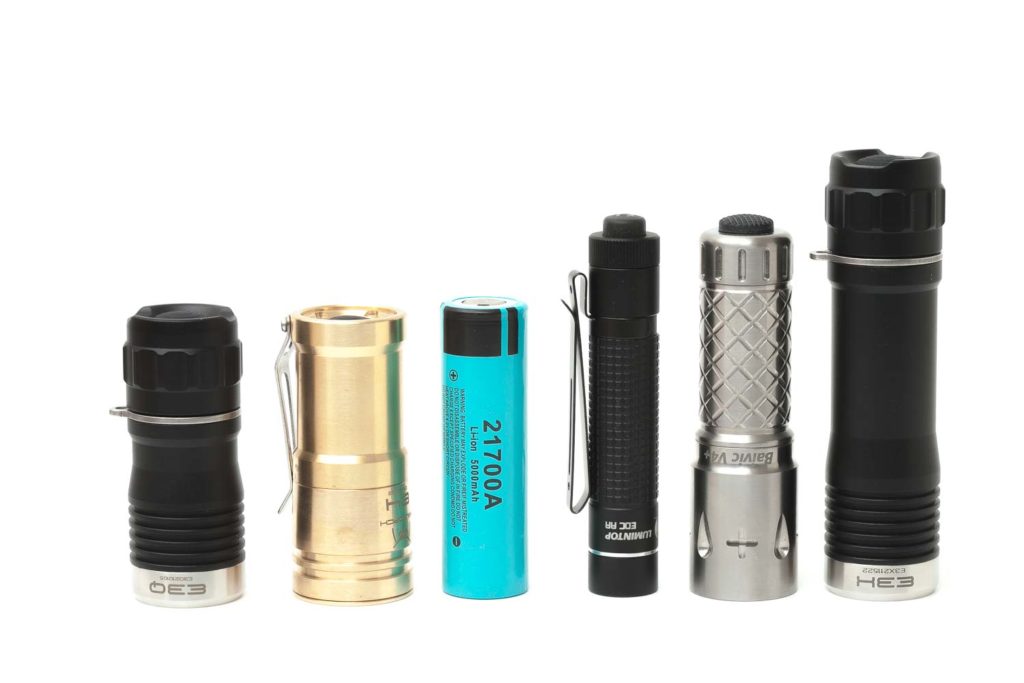
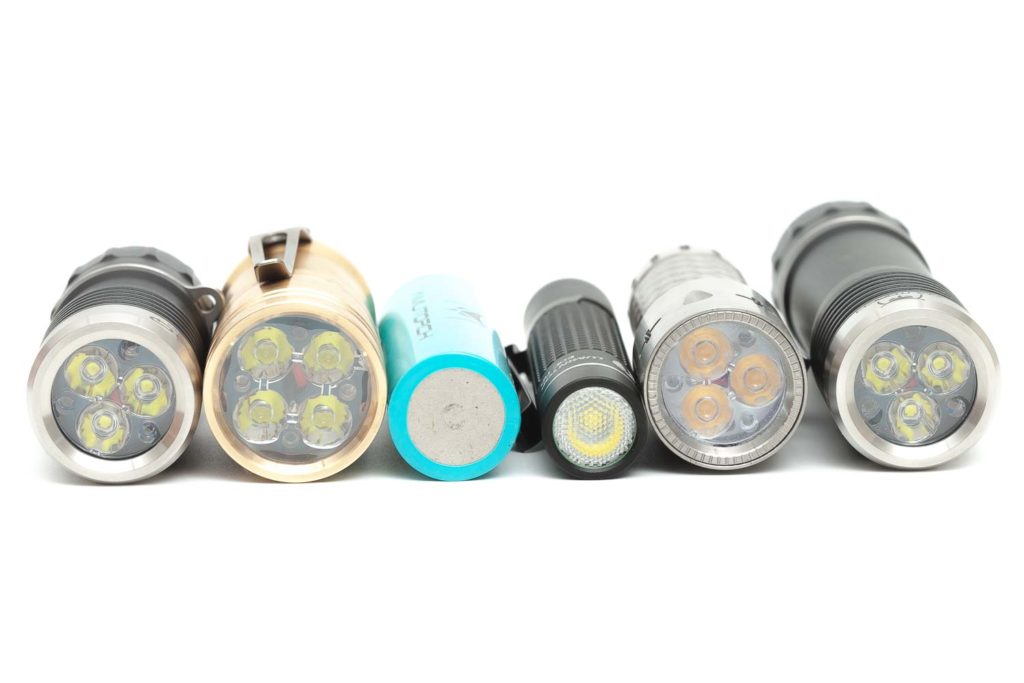
Driver & User Interface:
The Amutorch E4 has a pretty straightforward user interface.
By default it has 2 modes, Low and Turbo, but you can select your own desired mode group by doing 5 taps when On. It then starts blinking 1 time, 2 times, 3 times, 4 times, 5 times.
When you click the switch, that mode group is memorized.
Mode groups: (Keep in mind that Turbo and Strobe are accessible from all mode groups!!!!
| Mode Group: | Available Modes: |
|---|---|
| Group 1 | 1 mode: High |
| Group 2 | 2 modes: Eco, High |
| Group 3 | 2 modes: Med, High |
| Group 4 | 3 modes: Eco, Med, High |
| Group 5 | 4 modes: Eco, Low, Med, High |
Available modes:
- Eco 30lm) , Low (180lm), Med (350lm) , High (850lm) , Turbo (4000lm)
- Hidden strobe
From OFF:
- Half-press: nothing, it’s a reverse clicky switch
- Single-click: (to last used mode, mode memory)
- Double click: off again
From ON:
- Half-press: Cycle through the menu from Low to High
- Single-click: turns off
- Double tap (not click): Turbo
- Triple-tap (not click): Strobe
- 5 taps (not clicks): Programming menu
Shortcuts:
- To Turbo: double click from on
- To Moon: none
- To Strobe: triple click from on
Mode memory:
- Yes
Blinky modes menu:
- You can enter strobe menu when you do 3 quick taps when the flashlight is on. A quick tap will bring you back to the normal modes.
Low battery warning:
- Yes, the light starts blinking when the battery runs low. It will shut off around 3V, which is very conservative.
Lock-out mode:
- Just use the reverse clicky switch
PWM:
- Not visible by eye.
Conclusion:
To me, ECO shouldn’t be 30 lumens, and Low shouldn’t be 180 lumens. In my opinion, ECO should be like 1-5 lumen, and Low about 20-30 lumens max.
Batteries & Charging
Amutorch included a C1 battery charger that charges at a speed of 1A. I’m not into reviewing chargers, so I usually skip tests besides the ‘normal’ usage test, where I just charge the battery and see how much current the charger is using. The charger uses about 1A from the USB source.
The charger shows a red indicator LED during charge, which turns green when it is finished charging. The charge current does taper off towards the end of the charge and finally stops. The charger has a Micro USB port that you connect to your USB power adapter, and requires a 2A adapter, although it only pulls 1A.
When I charged the battery, the SkyRC MC3000 showed that it only charged 1200mAh, which made me doubt. Either the flashlight is using a has a high cut-off Voltage, or the battery isn’t really 1400mAh.
I then did a discharge test of 1 of the 20350. I set the charger to a discharge current of 750mA and 2.75V as the end Voltage, and in the end it showed a total discharge capacity of 1282. This isn’t bad, but not the 1400mAh I was expecting.
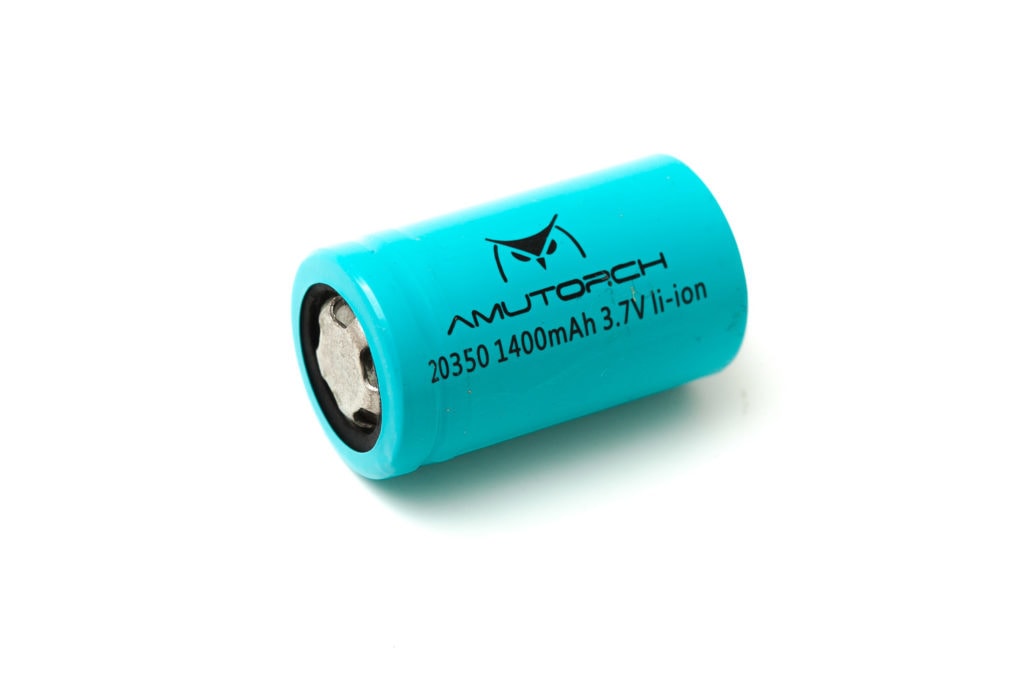
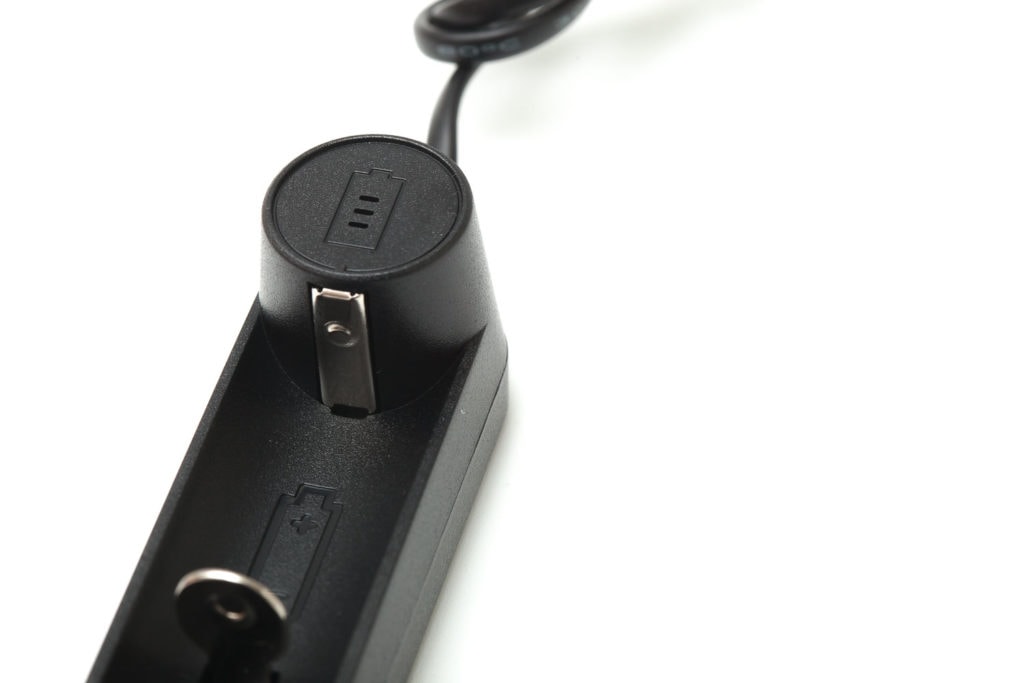
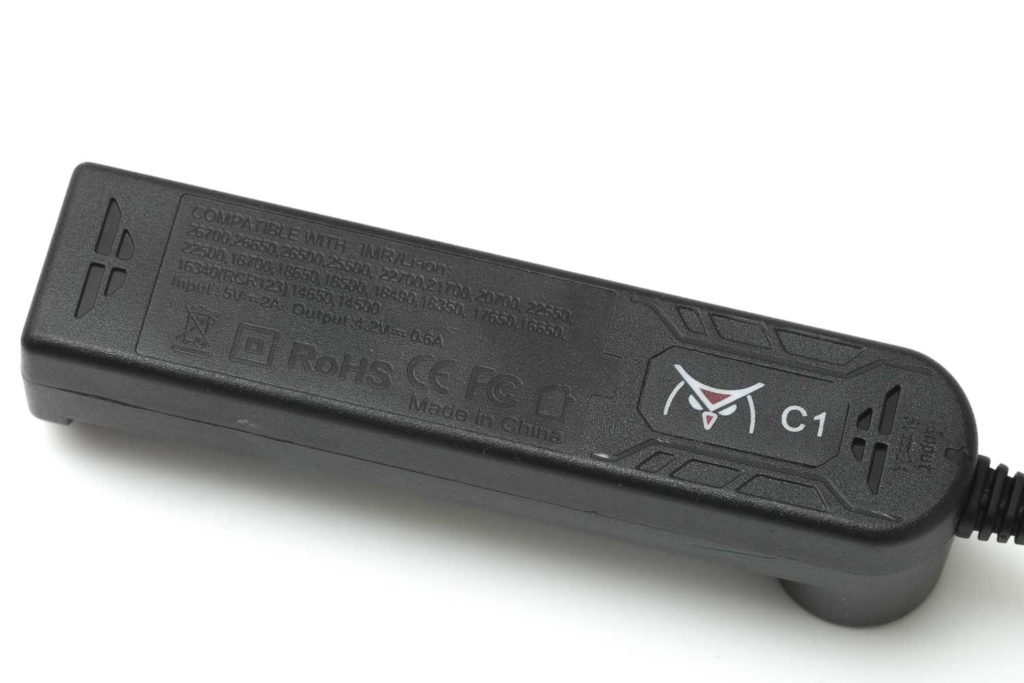
Performance
Lumen measurements:
All output numbers are relative to my homemade Integrating Sphere. It is set up with an Extech SDL400 Lux Meter for measurements including a Kenko PRO1D ND-16 filter. The base measurement is done with a Convoy S2+ that has been tested at 255 lumens.
All of my readings were taken from a fully-charged Amutorch 20350 1400mAh.
Amps were measured with a Fluke 77III.
| Mode | Amps | Specs | 10 min | 30 sec | start |
|---|---|---|---|---|---|
| Eco | 0.05A | 30 | – | 19.15 | 18.56 |
| Low | 0.35A | 180 | 152 | 153 | 154 |
| Med | 0.70A | 350 | 295 | 299 | 302 |
| High | 1.52A | 850 | 598 | 615 | 616 |
| Turbo | 5.20A | 4000 lm | 613 lm | 2305 lm | 2777 lm |
You can see that none of the measurements are anywhere near the advertised output. I hope Amutorch will start using more reliable numbers soon, so we can start trusting them more. These numbers are just highly exaggerated.
Turbo shouldn’t be 4000 lumens, but 2300 lumens, and High shouldn’t be advertised as 850 lumens but 600 lumens.
Eco mode started about 1 lux lower at start than it did at 30 seconds. This might be a setting up problem where I pushed the button, or moved the flashlight for a moment.
Also, this is based on the 20350 battery, and if you use a high amp 21700, the numbers are higher. I tested it, and the amps were higher, as was the output.
Runtime:
The runtime test was done with the 50cm integrating sphere, including the Kenko Pro1D ND-16 filter and Extech SDL400 data logging Lux Meter.
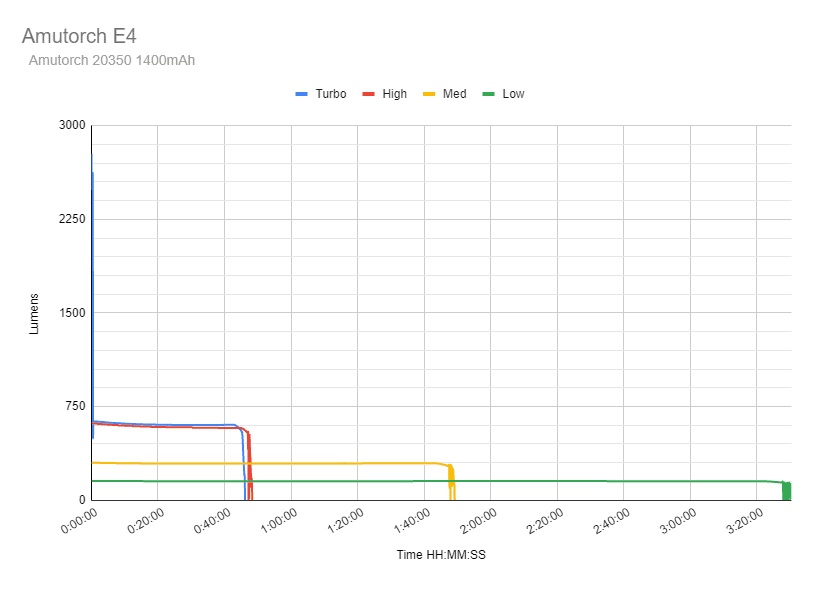
Turbo is only working for 30 seconds but can be reactivated. Keep in mind that the light gets extremely hot, so it’s very unlikely you will activate Turbo more than just 1 time. The output after the drop is around 605 lumens, which is relatively stable for the total runtime. The total runtime for Turbo is (including the flickering) is 46 minutes.
High looks similar except for the burst, at roughly 600 lumens, with a total runtime of 48 minutes. The last 2 minutes or so, have a low voltage warning.
Medium starts around 300 lumens and slowly decreased to 295 lumens when it starts blinking at 1 hour and 48 minutes.
Low is about 150 lumens for 3 hours and 28 minutes when the first blinking appears, at 3 hours and 30 minutes it turns off.
The following picture is zoomed in a bit, so you can see just the first hour.
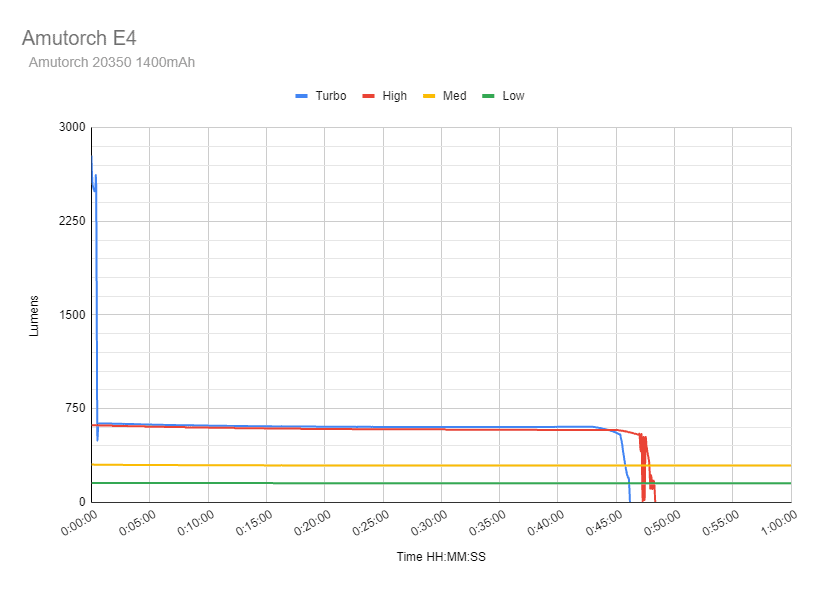
Throw Measurement
Measurements were taken indoors at 5 meters, with a professional Hagner E4-X Lux Meter. (30 seconds)
| Mode | Candela | Meters | Yards |
|---|---|---|---|
| Eco | 125 | 22 | 24 |
| Low | 975 | 62 | 68 |
| Med | 1950 | 88 | 97 |
| High | 4000 | 126 | 138 |
| Turbo | 15850 cd | 252 mm | 275 yd |
Amutorch doesn’t show any candela numbers in their specifications, but they do show a total reach of 242 meters. My measurements were a bit more optimistic and came out at 252 meters.
Beamshots
For the following beamshots I used a Canon EOS 5D Mk2 and a 50mm lens. manual settings: ISO1600, 1/4sec , F4, 5000K
The shed is about 65 meters / 71 yards away, and I waited 1 minute from On to do another beamshot. That way you can easily see the difference in Turbo output, which only works for 30 seconds.
The ones that were taken after 1 minutes are labeled with 60sec.
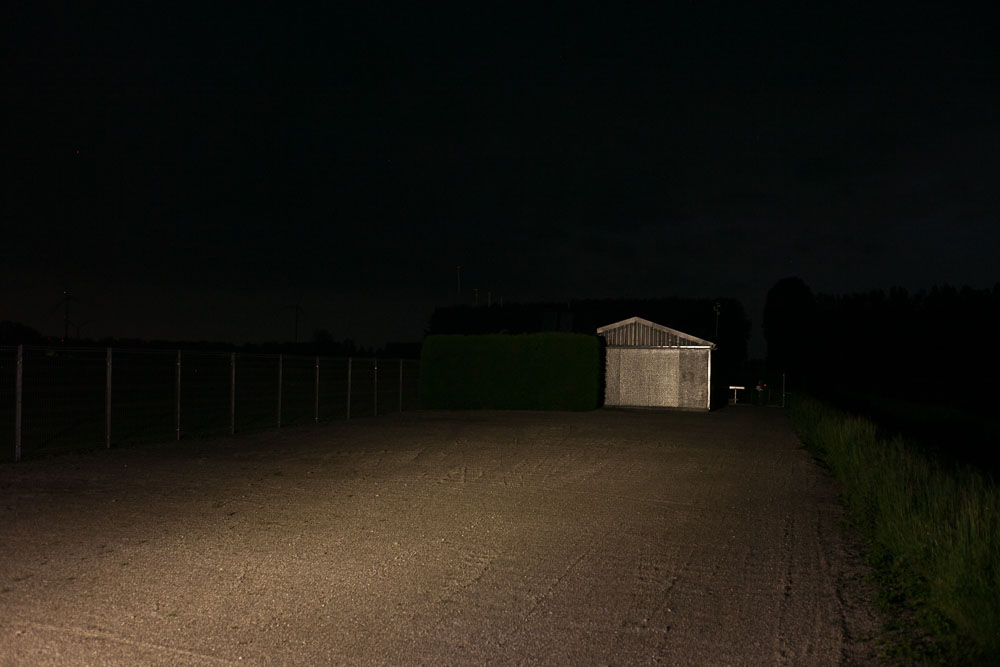
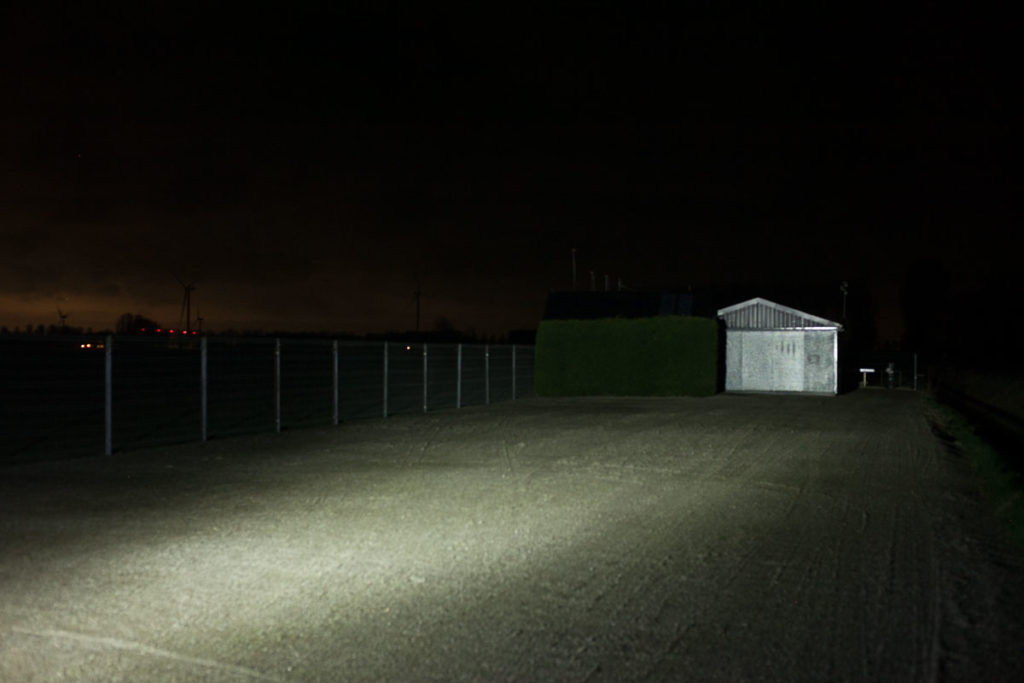
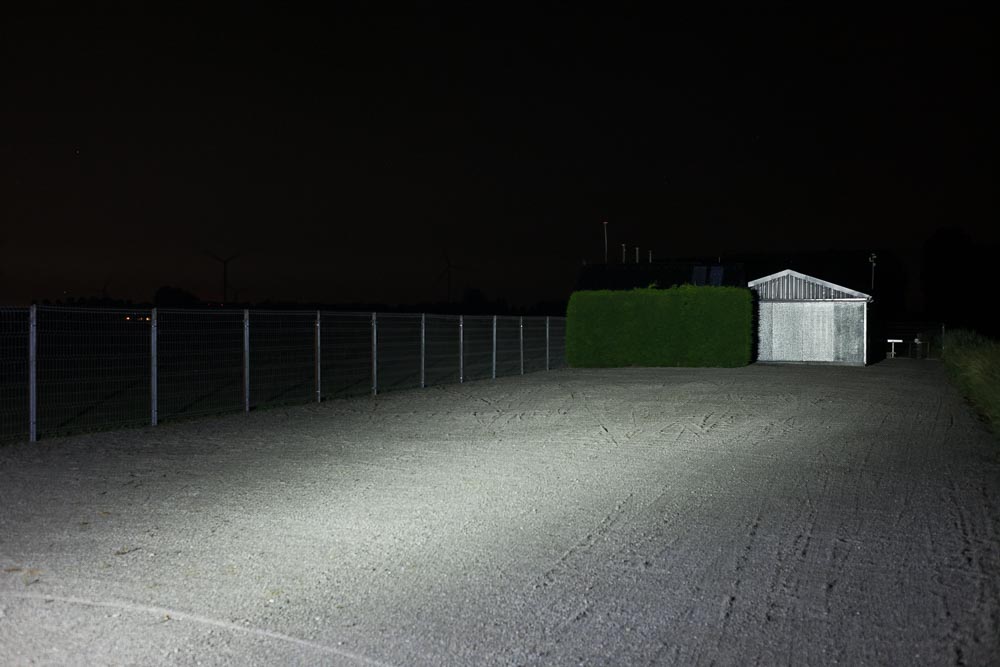
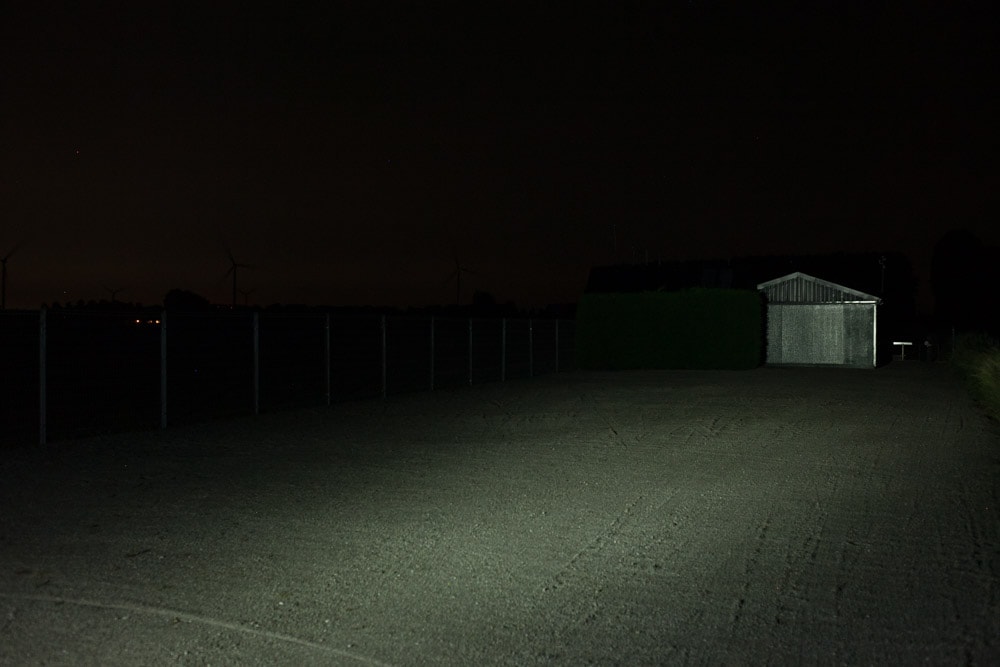
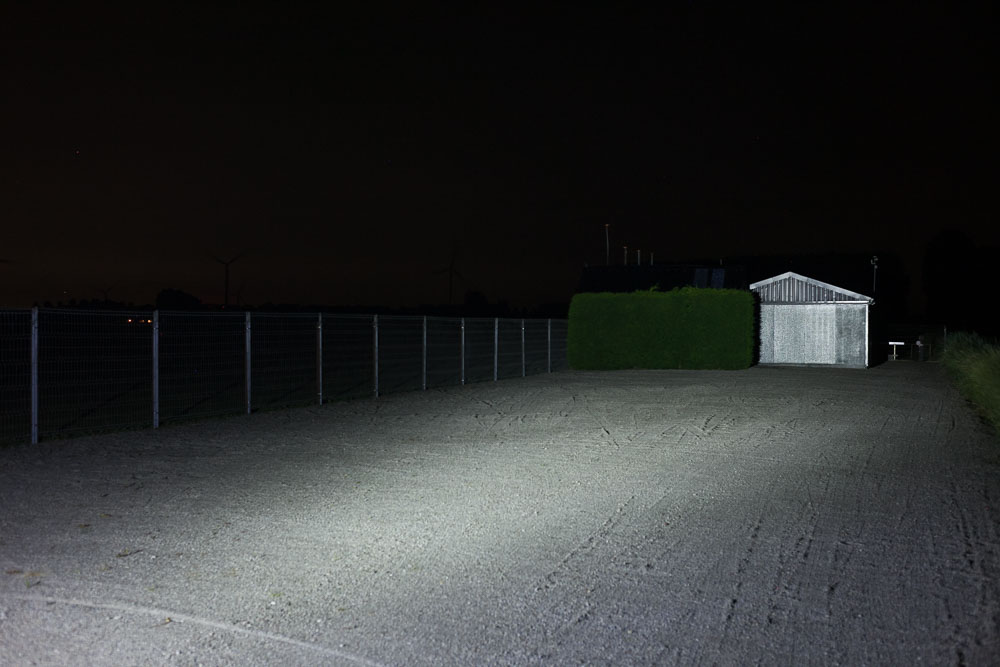
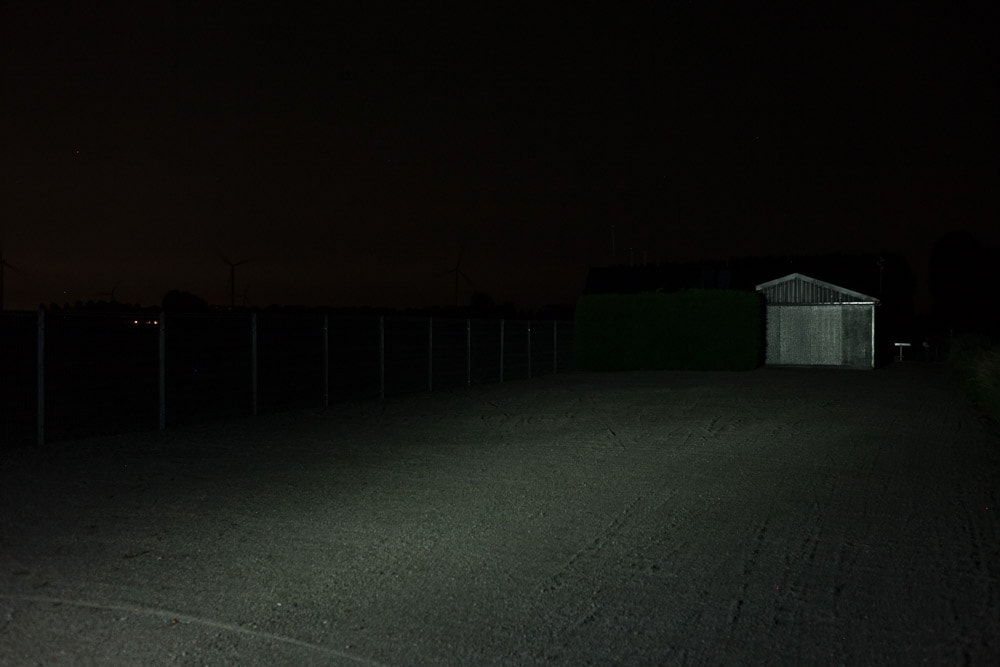
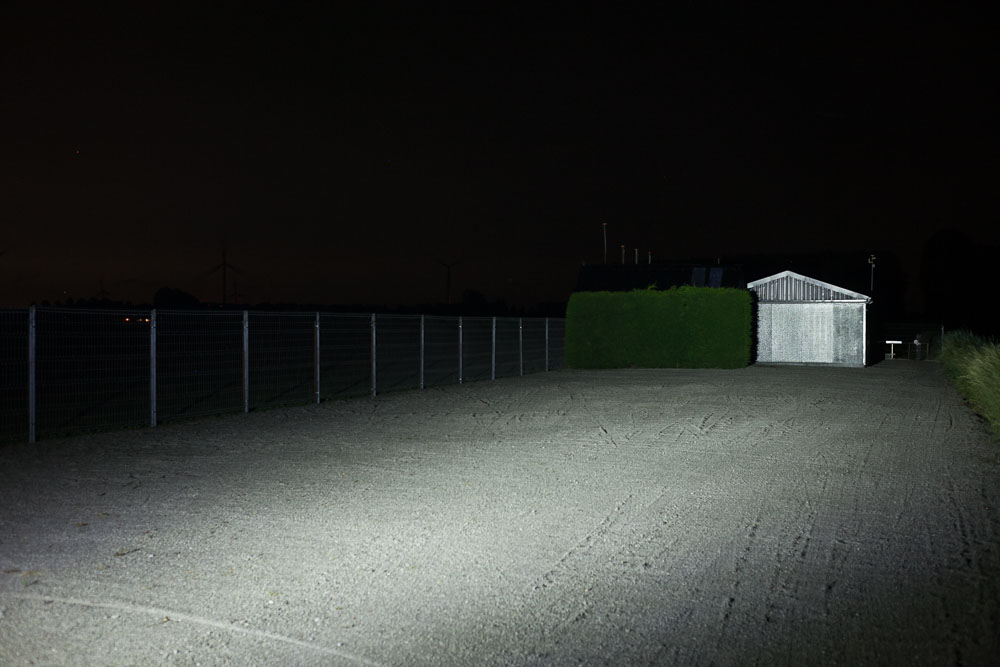
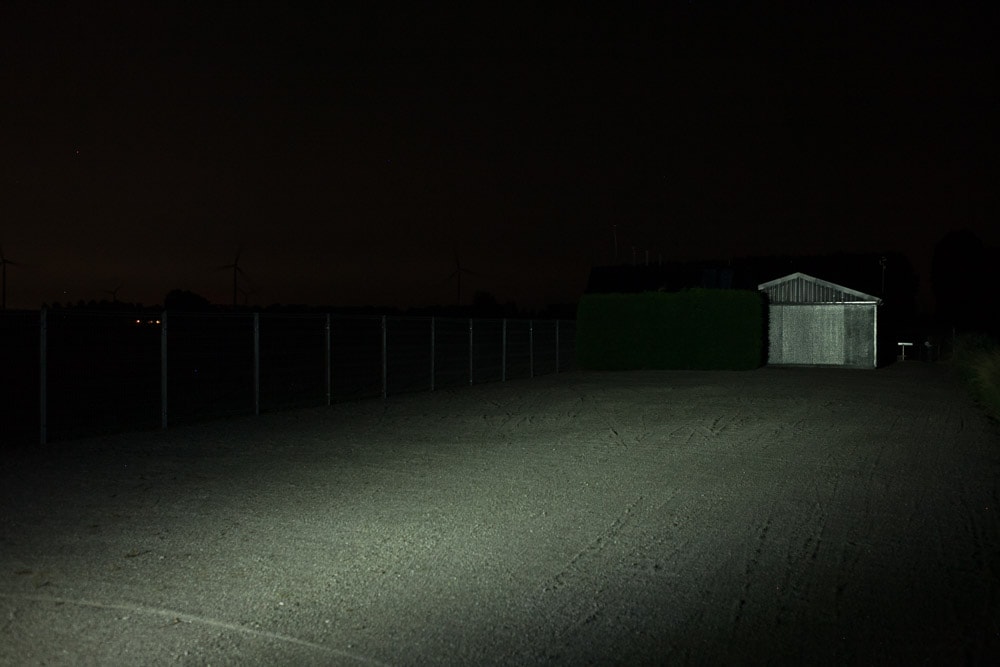
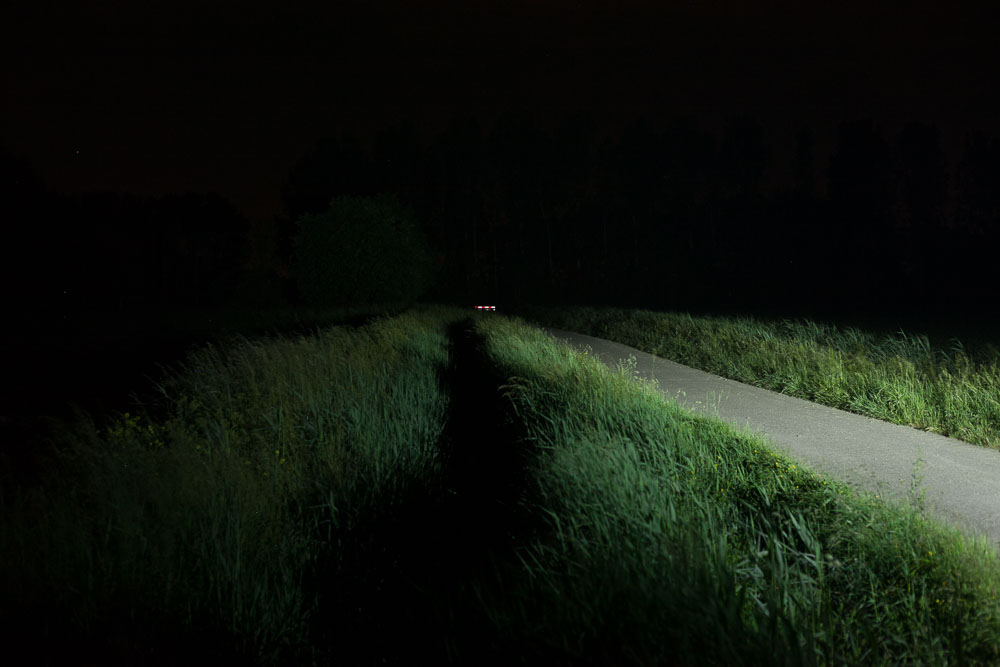
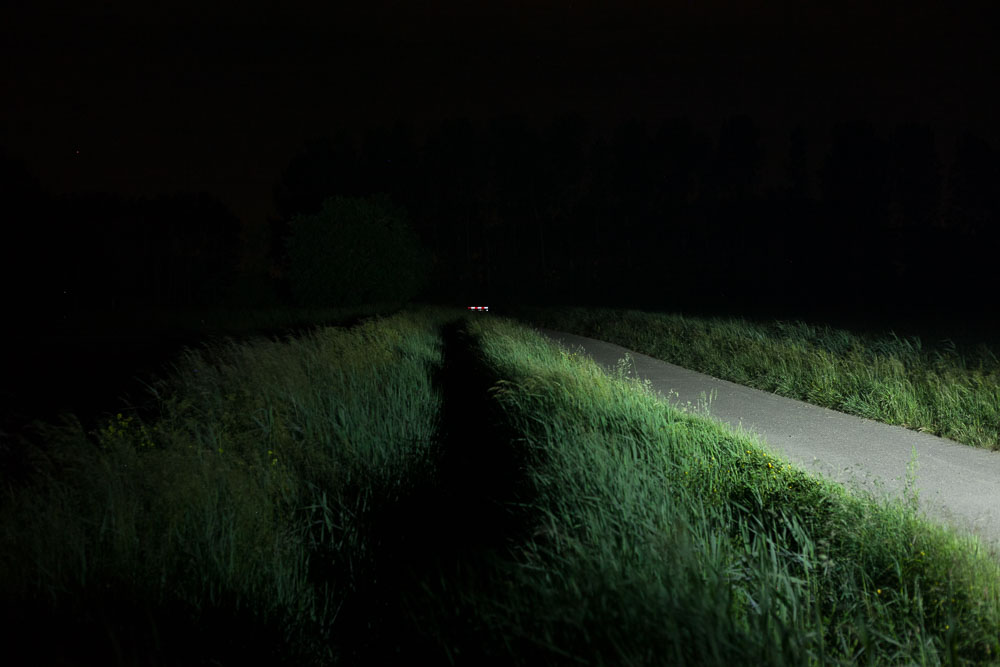
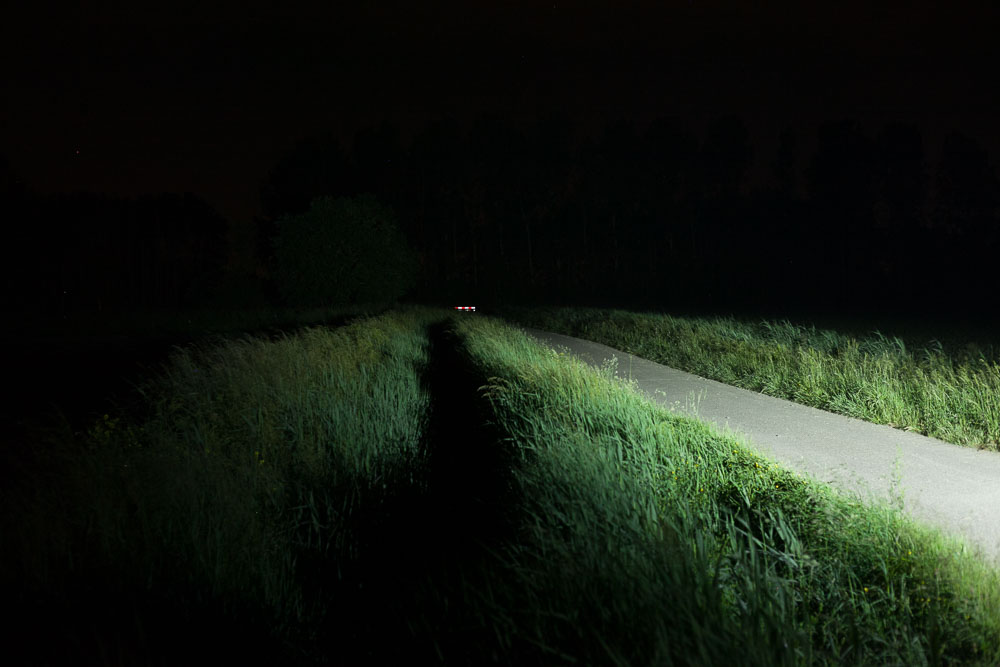
Disclaimer: This flashlight was sent to me for review at no cost by Amutorch. I have not been paid to review, nor have I been holding back on problems or defects.
Final Verdict
Pros
- You can make the brass look very nice
- Blinks when the battery runs low
- Reaches claimed distance
- The beam is nice and smooth
- Plenty bright for such a small light
Cons
- Gets really hot
- Not reaching claimed output
- No manual was included
Explanation on star ratings:
1: Avoid: my phone flashlight would be a better choice – 2: Poor: significant defect or issues, much better options available at the same price – 3: Average: some defects or issues – 4: Good: recommended (minor issues) – 5: Great: highly recommended

4.5 stars: ★★★★⋆
I don’t have many brass flashlights, but the E4 looks kind of nice, and heavy. Mine arrived with some dirt on the body, and without a manual. Fortunately, the UI is pretty straight forward. It doesn’t reach its claimed output, but it did reach its claimed beam distance.
I surely hope Amutorch will start using more realistic lumen numbers, instead of exaggerated numbers that will make people doubt the brand.
Amutorch E4 for sale
1lumen selects and reviews products personally. We may earn affiliate commissions through our links, which help support our testing.